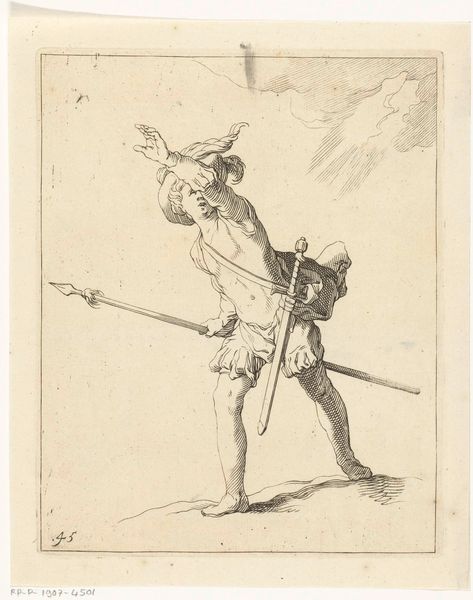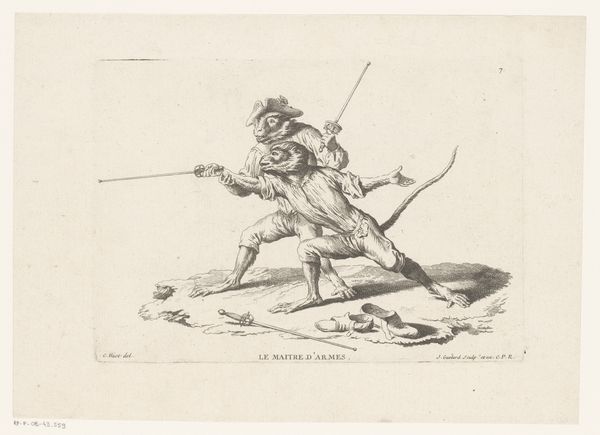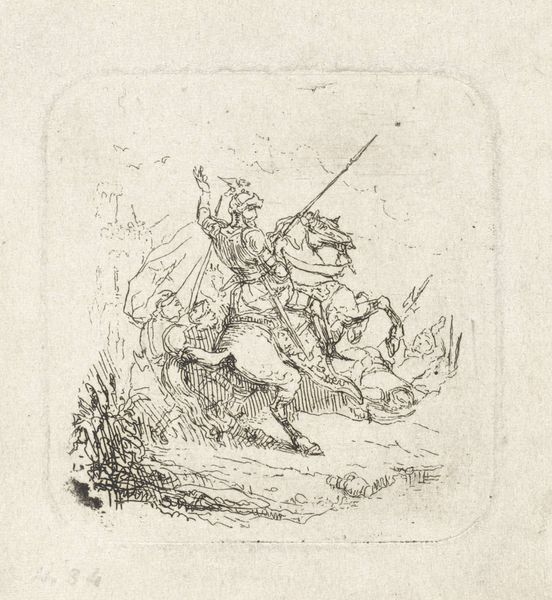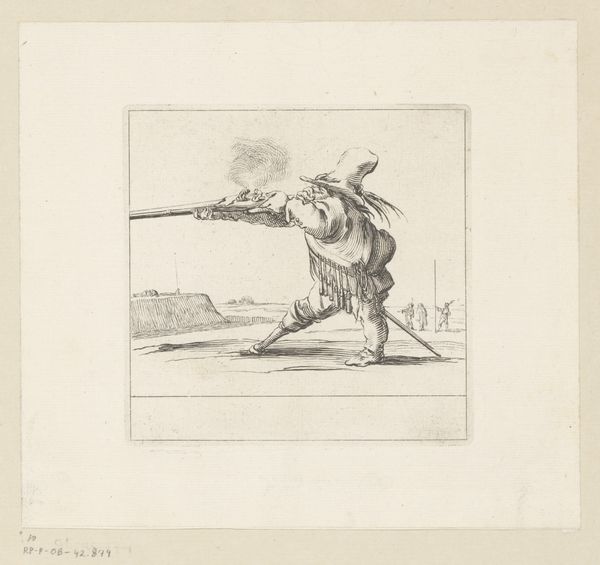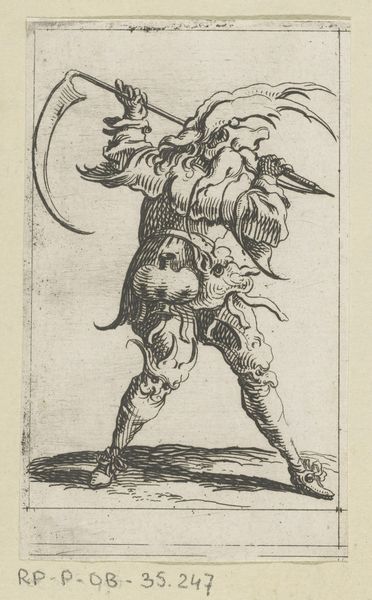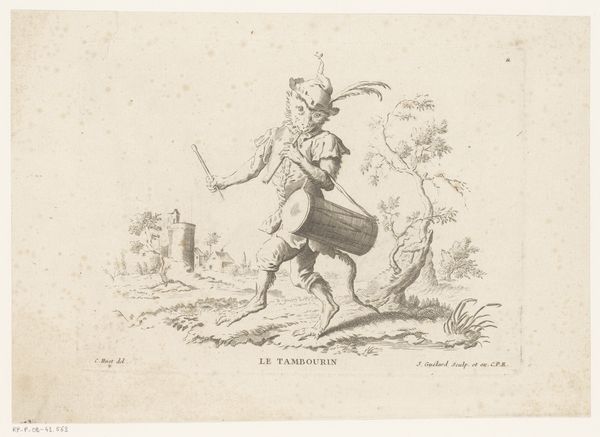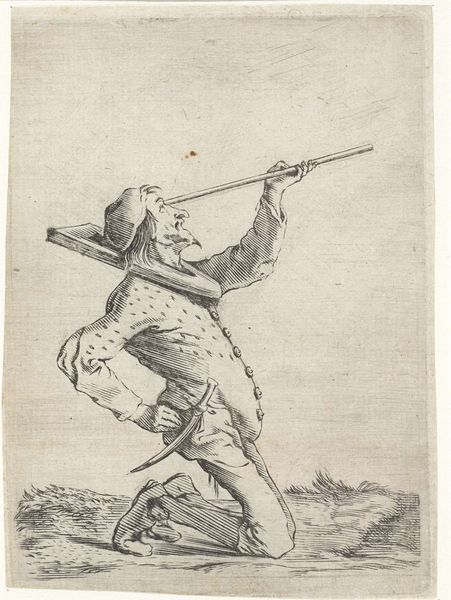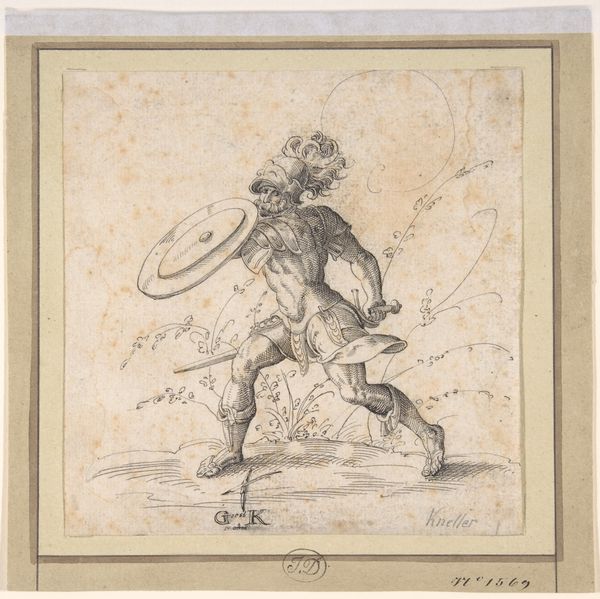
drawing, print, ink, pen, engraving
#
drawing
#
comic strip sketch
#
imaginative character sketch
#
baroque
# print
#
caricature
#
landscape
#
figuration
#
personal sketchbook
#
ink
#
idea generation sketch
#
sketchwork
#
ink drawing experimentation
#
pen-ink sketch
#
line
#
sketchbook drawing
#
pen
#
genre-painting
#
storyboard and sketchbook work
#
sketchbook art
#
engraving
Dimensions: height 91 mm, width 107 mm
Copyright: Rijks Museum: Open Domain
François Collignon made this print of a flute-playing man sometime in the 17th century. It's a small etching, just a few inches in either direction. The image is a caricature. The figure is dressed in fine clothing, but his features are exaggerated and grotesque. He seems to be prancing across a rural landscape, with a windmill in the background. Prints like these were often made in series. Satire was very popular in Dutch Golden Age culture. The Dutch Republic was a competitive society, and humor was a way of letting off steam. The fact that this print was made as a multiple also speaks to a burgeoning art market in the Netherlands. Prints were relatively cheap and easy to produce and collect, as compared to paintings. They were accessible to a wider range of people, outside of the upper classes. To understand art fully, we delve into the social and economic conditions of its creation. We examine a wide variety of sources, to see how it relates to the structures of its time.
Comments
No comments
Be the first to comment and join the conversation on the ultimate creative platform.


